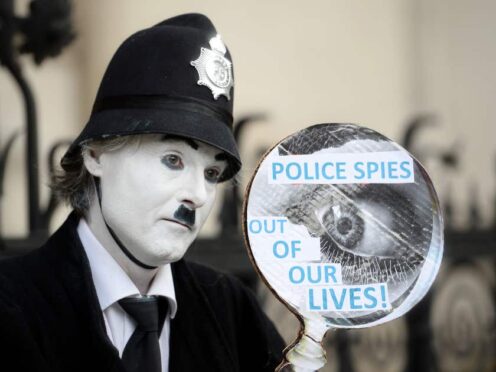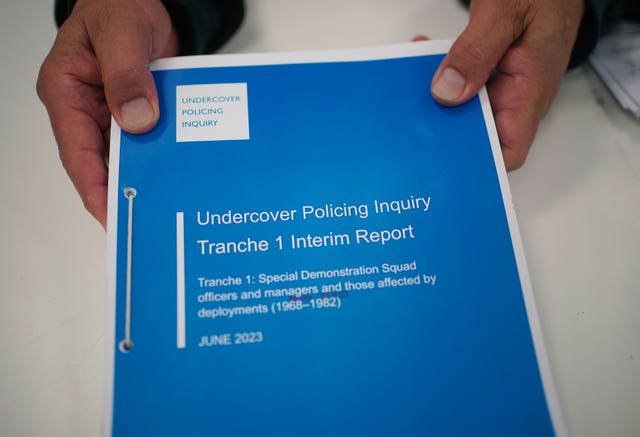
The next stage of the mammoth public inquiry into the activities of undercover police is due to begin on Monday.
Opening statements will be made over three days at the start of a batch of hearings looking at the since disbanded secret Metropolitan Police unit the Special Demonstration Squad (SDS) between 1983 and 1992.
Evidence is due to be heard in two stages from July to early August and then for several months starting in late September.
A report following the first batch of hearings, which looked at the SDS between 1968 and 1982, found that the squad should have been shut down in the first years of its existence.
It said that, of the groups spied upon during that period, only three were legitimate targets.

The SDS and a successor unit spied on hundreds of campaign groups over four decades.
In the 1980s and 1990s the SDS infiltrated groups including the Campaign for Nuclear Disarmament, Troops Out, and the Socialist Workers Party, as well as women’s, anarchist and animal rights groups.
An officer was also deployed to the British National Party – the only right-wing group the SDS ever targeted.
One of the undercover officers working at the time, Bob Lambert, was accused of planting a firebomb while undercover with an animal rights group that targeted branches of Debenhams in the 1980s, and fathered a child with a woman who did not know he was a police officer.
The Metropolitan Police apologised and paid compensation to Lambert’s biological son in 2020.
The inquiry will also hear evidence that the SDS used the identities of deceased children as cover without the permission of bereaved families during this period.
Then-home secretary Theresa May set up the Undercover Policing Inquiry in 2015 after a public outcry over the actions of undercover officers.
To date it has cost just over £82 million, and is currently due to publish its final report at the end of 2026 if enough funding is available.
The inquiry still has a massive amount of information and evidence to tackle covering the SDS between 1993 and 2007, then its successor squad the National Public Order Intelligence Unit.
It then plans to look at other undercover policing activities, before examining current practices and what should happen in the future.

Enjoy the convenience of having The Sunday Post delivered as a digital ePaper straight to your smartphone, tablet or computer.
Subscribe for only £5.49 a month and enjoy all the benefits of the printed paper as a digital replica.
Subscribe